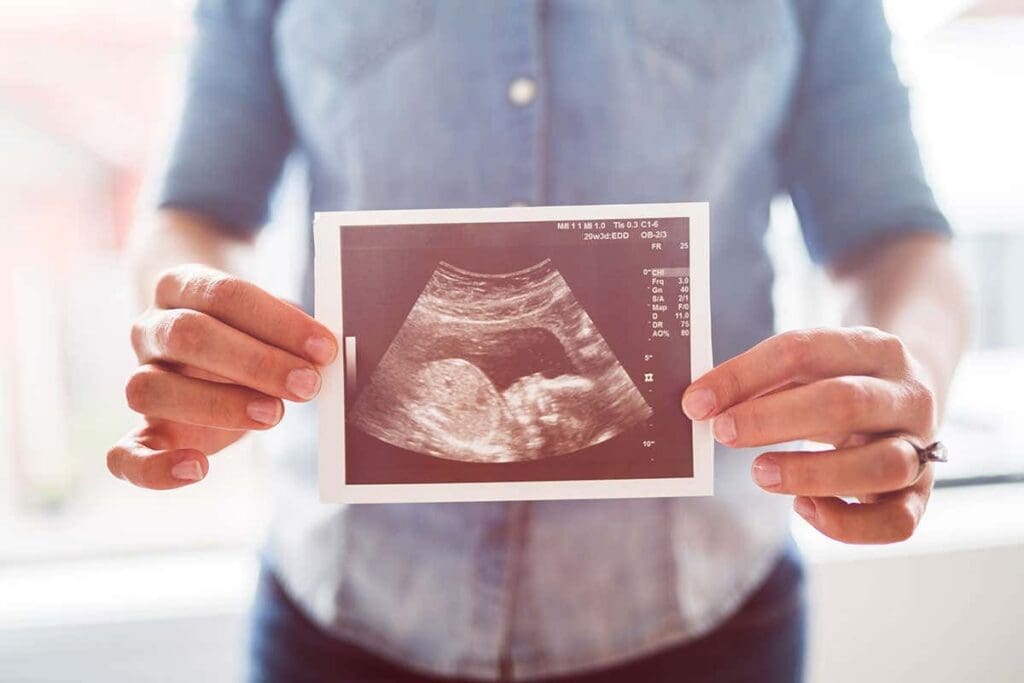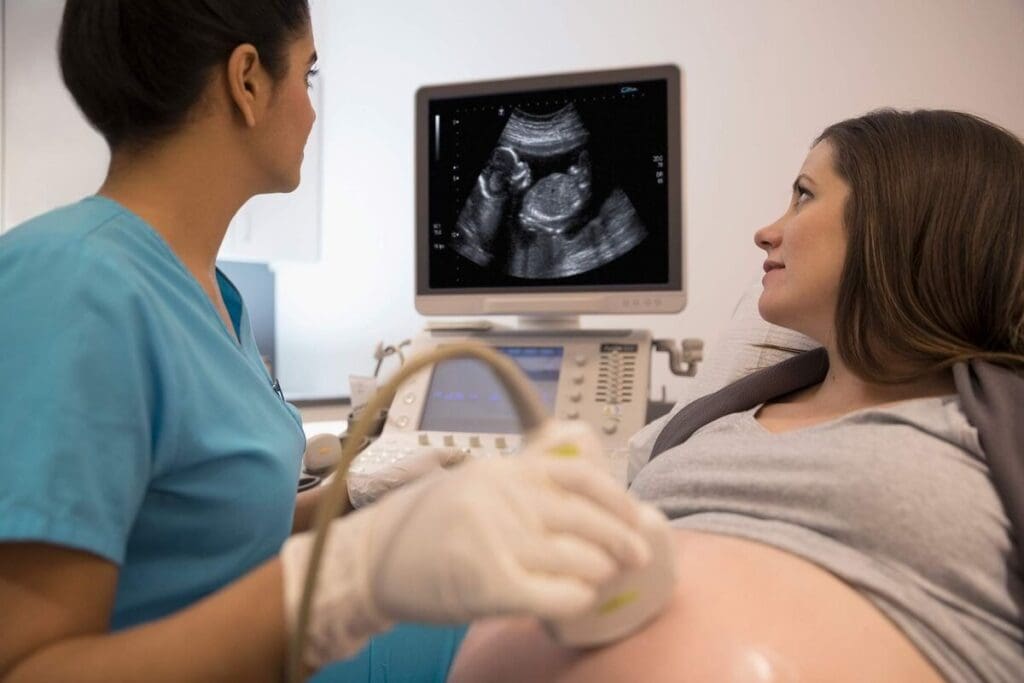Last Updated on November 24, 2025 by
The 20-week ultrasound scan, also known as the anatomy or anomaly scan, is a key moment in pregnancy. It’s natural to worry about the results, but most scans are normal. This gives many expectant parents a big relief.

Studies indicate that 90-95% of these scans show no major issues. This news helps many parents feel more at ease. Yet, some might get unexpected news about their baby’s health. We’ll look into why this scan is important, what it checks, and the chances of getting concerning results.Understand the likelihood of receiving concerning news during your 20 week ultrasound. Learn about common findings and their implications.
At 20 weeks, the anatomy scan ultrasound is a key moment. It gives you a peek into your baby’s anatomy and health. This scan is a detailed check from head to toe.
The 220-week anatomy scan is all about checking your baby’s major systems and organs. It looks at the brain, face, spine, limbs, heart, and internal organs. It’s usually done between 18 and 22 weeks, with 20 weeks being the best time.
During the 20-week pregnancy ultrasound, a sonographer will do a detailed check. Here’s what you can expect:

The anatomy scan ultrasound checks many parts of your baby’s development. It looks at:
By checking these structures, healthcare providers understand your baby’s health and development. This is key for spotting any issues early and planning care.
Expectant parents often wonder about the 20-week scan. This ultrasound, or anatomy scan, checks the baby’s growth and looks for any issues. It’s a detailed look at how the baby is doing.
Studies show that 90-95% of 20-week scans find no big problems. This news is comforting for parents-to-be. It means most pregnancies are healthy at this stage. But it’s important to remember that every pregnancy is different.
On the other hand, 3-5% of scans do find some issues. Finding a problem can be scary. But many of these issues are not serious. They can often be managed with the right medical help.
The Centers for Disease Control and Prevention (CDC) has data on birth defects. They say about 3% of babies are born with defects. These can range from mild to severe. The CDC highlights the role of prenatal care, like the 20-week scan, in spotting problems early.
Knowing these stats can help parents feel better about their 20-week scan. It shows the good news and why this scan is so important.
The 20-week anatomy scan is a key moment in pregnancy. It gives insights into the baby’s growth. Most scans show no major issues, but some may find conditions that need more attention.
Congenital heart defects are common, found in about 1 in 100 pregnancies. These can be mild or severe and often need quick medical action after birth. Finding them early helps prepare for the baby’s care.
Neural tube defects, like spina bifida, are rare, found in 0.1% of pregnancies. Spina bifida happens when the spine and spinal cord don’t form right. The 20-week scan can spot these, helping parents plan for their baby’s care.
The scan can also find markers for chromosomal issues. These markers don’t confirm a condition but suggest more tests are needed. Parents can then talk to specialists about further tests, like amniocentesis.
The scan might also find issues with the kidneys, brain, and other organs. Finding these early can greatly affect how the condition is managed and the baby’s outcome.
It’s important to remember that finding something during the 20-week scan doesn’t always mean a serious problem. Many issues are minor and might fix themselves. For more info on the 20-week scan, check out NHS guidelines.
Some common findings include:
Knowing about these possible findings helps parents prepare and make informed choices about their pregnancy care.

It’s important for expectant parents to understand the severity of findings during an anatomical scan at 20 weeks. The results can vary from soft markers to confirmed anomalies. We’ll explain what each means for expectant parents.
During the 2020-weeknatomy scan, sonographers might find soft markers or confirmed anomalies. Soft markers are ultrasound findings that suggest a higher risk of certain conditions. But they’re not enough to diagnose a problem on their own. Confirmed anomalies, on the other hand, are clear structural abnormalities seen during the scan. It’s key to know that soft markers don’t always mean there’s a problem, but they might need more testing.
For example, an echogenic bowel is a soft marker that could hint at a chromosomal condition. Yet, many fetuses with this finding are perfectly healthy. Confirmed anomalies, like a heart defect, are clearer and might need specialist advice for understanding the implications and possible treatments.
Some findings at 20 weeks are minor and often go away on their own. For instance, a mild dilatation of the renal pelvis might be seen, but it usually clears up by birth. These minor findings can cause worry if not understood correctly. We reassure expectant parents that many minor findings are not serious and won’t affect the baby’s health.
Some findings during the anatomical scan at 20 weeks may show serious conditions needing medical help. These can include major heart defects, neural tube defects like spina bifida, or other structural issues. Early detection of these conditions allows for timely specialist advice and planning for care after birth.
We know that hearing about a serious condition can be tough. But we’re here to support expectant parents. We guide them on what to do next and help connect them with the right resources and specialists.
Getting concerning news at your 20-week ultrasound can be scary. It brings a lot of uncertainty and worry. Knowing what to do next is very important.
If the ultrasound shows possible issues, more tests are often needed. Follow-up testing options include:
These tests give more detailed information about your baby’s health. They help you and your doctor make good choices about your pregnancy.
It’s very important to talk to specialists after getting concerning news. You might see:
Talking to these specialists helps you understand your baby’s condition. They can also talk about treatment options.
The time for more tests can change based on the ultrasound’s findings. Usually, tests happen a few weeks after the first scan. Your doctor will make a personalized plan for you.
Getting bad news is tough, but you’re not alone. Your healthcare team is there to help you make choices. You’ll talk about the risks and benefits of tests, think about the diagnosis, and plan for the future.
We’re here to support you. We’ll guide you and care for you to help you and your baby have the best outcome.
The 20-week anatomy scan is key in spotting possible fetal issues early. It gives parents vital info about their baby’s health. This helps them make smart choices about their pregnancy.
Finding fetal problems early can greatly help babies. Doctors say early diagnosis leads to better care. This can include surgery, medicine, or other treatments not available later.
A study showed that early findings of heart defects can lead to better surgery results. This highlights the scan’s role in spotting these issues early.
Handling fetal issues needs a team effort. This team includes doctors, specialists, and support staff. They create a care plan that fits the mother’s and baby’s needs.
A perinatologist said, “Working together ensures the baby gets the best care.” This teamwork is key to the best results.
Knowing about a fetal issue early helps parents prepare for their baby’s needs. They can plan and get ready with the help of specialists. This includes talking to surgeons or genetic counselors.
Families with a fetal anomaly diagnosis need lots of support. This includes emotional help, educational materials, and connections to groups. A support group leader said, “Having others who understand can be very comforting and helpful.”
Doctors are key in guiding families to these resources. They make sure families get the support they need.
“Support is key during this challenging time. Families should not hesitate to reach out to their healthcare provider for guidance and resources.”
– Support Group Leader
As we wrap up our talk on the 220-week sonogram, it’s vital to keep things in perspective. Feeling anxious about the scan is normal, but most 20-week scans show no big issues. Knowing what an anatomy scan is and why it matters can ease your worries.
We hope expectant parents now understand what the 20-week anatomy scan is all about. This scan is a big deal in pregnancy, giving insights into the baby’s growth. It helps spot problems early, so parents and doctors can make smart choices about the pregnancy.
It’s important to stay balanced. While the scan is a key tool, most scans don’t find major problems. We’re here to support you, giving you the help and care you need for a great pregnancy outcome.
The 20-week anatomy scan, also known as the anomaly scan, is a detailed ultrasound. It checks the baby’s development and detects any abnormalities or congenital conditions.
During the scan, a sonographer or ultrasound technician will examine the baby’s anatomy. They check key structures like the heart, brain, and other vital organs.
It’s natural to feel anxious, but most scans show no significant abnormalities. Around 90-95% of scans are normal.
Soft markers are minor findings that may indicate a problem. But they often resolve on their own. Confirmed anomalies are more significant conditions that need further evaluation and possibly intervention.
If a problem is detected, expectant parents can expect follow-up testing options. They will also consult with specialists and get a timeline for additional diagnostics to determine the best course of action.
Early detection allows for a multidisciplinary approach to treatment. It prepares for special needs after birth and accesses support resources for families. This improves outcomes for babies with detected conditions.
The scan can detect congenital heart defects, neural tube defects like spina bifida, markers for chromosomal conditions, and other structural anomalies.
While the scan is detailed, it’s not a guarantee that all issues will be detected. Some conditions may only become apparent later in pregnancy or after birth.
Expectant parents can prepare by understanding the purpose and procedure of the scan. They should also be aware of the possible findings and next steps.
Families can access various support resources, including counseling, therapy, and support groups. These help navigate the challenges and opportunities of caring for a baby with special needs.
Subscribe to our e-newsletter to stay informed about the latest innovations in the world of health and exclusive offers!